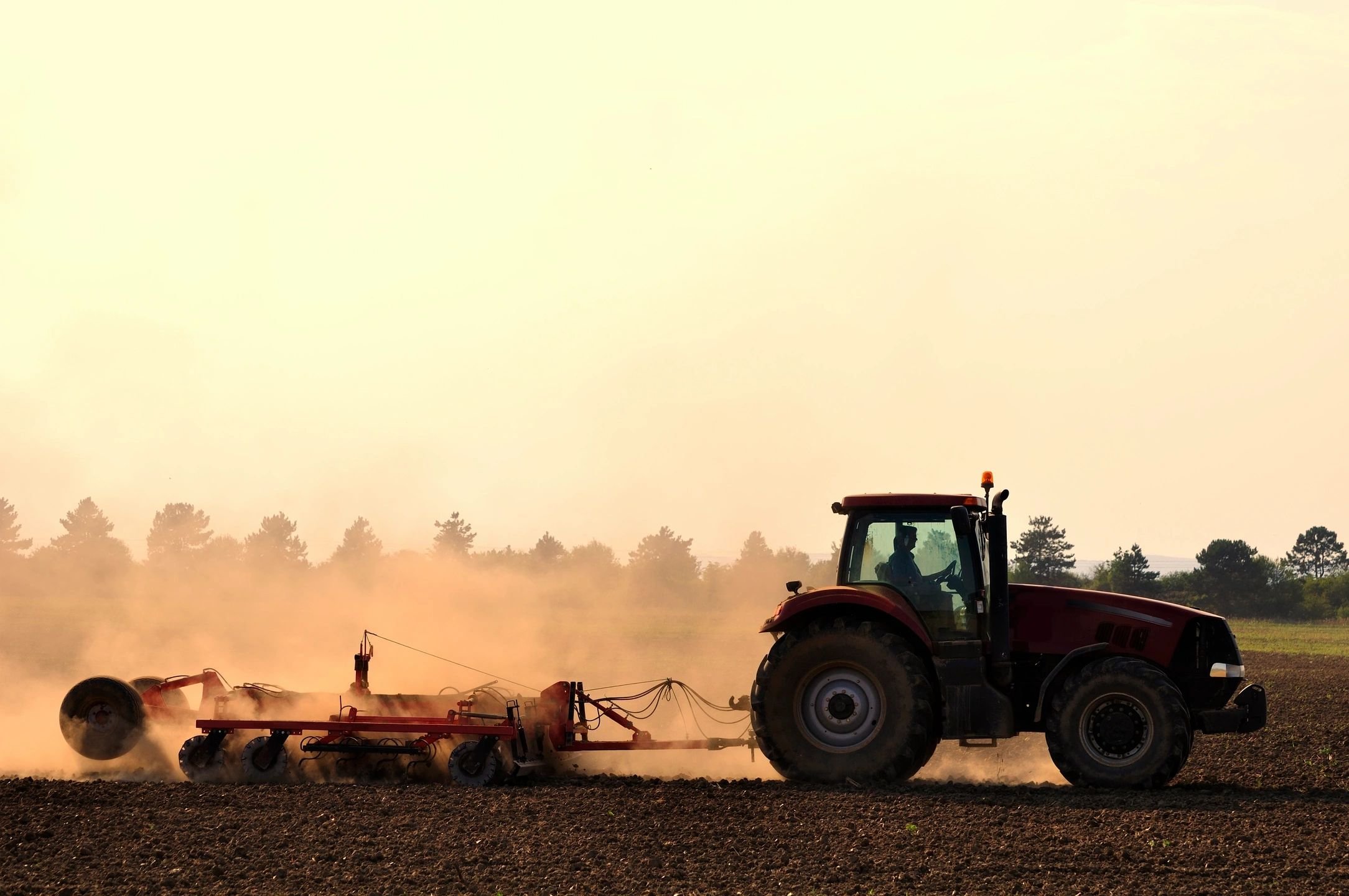 There are no farms on Fire Island. But Suffolk County, of which it is a part, is a top agricultural county in New York State. As New York Comptroller Tom DiNapoli noted in a recent “economic snapshot” of the area, “Suffolk County has the highest value for agricultural crops of any county in New York State.”It has also, for years, been complicit in a huge scandal in the United States – the treatment of farmworkers.Thus passage of the Farmworkers Bill of Rights by the New York State Legislature at its recent session was among its most notable achievements this year. Governor Andrew Cuomo says he will sign the measure into law.Farmworkers, many of them migrant farm workers lured by phony promises, have been excluded from basic laws in the U.S., among them those on housing and work. The state legislation would give them rights including overtime pay, voting to unionize, having at least one day off a week and receiving workers’ compensation benefits.“Today is the culmination of a decades-long fight centered upon one simple premise: that farmworkers deserve fairness, equality and justice,” said New York AFL-CIO President Mario Cilento upon legislative passage of the Farmworkers Bill of Rights.Every semester in my four decades of teaching an Environmental Journalism class at the State University of New York/College at Old Westbury I show the students Edward R. Murrow’s TV documentary, “Harvest of Shame,” about the plight of farmworkers broadcast on CBS in 1960.“We present this report on Thanksgiving because were it not for the labor of the people you are going to meet, you might not starve, but your table would not be laden with the luxuries that we have all come to regard as essential,” declared Murrow, the preeminent U.S. broadcast journalist of his era, standing in a farm field. “They are the migrants, workers in the sweatshops of the soil – the harvest of shame,” says Murrow. They are “the forgotten people.”The documentary, which you can view on You- Tube, always leaves students shocked. Their jaws drop as they hear farmworkers who believed the promises of crew leaders who recruited them to harvest crops, are charged for all sorts of things and become indebted, trapped in migrant farm work. The housing and work conditions shown are outrageous.Shown, too, are the terrible journeys. “Produce en route to the tables of America by trailer is refrigerated to prevent bruising,” says Murrow. “Cattle carried to market, by federal regulation, must be watered, fed and rested for five hours every 24 hours. People – men, women and children – are carried to the fields … in journeys as long as four days and three nights. They often ride 10 hours without stopping for food or facilities.”A minister, the Rev. Michael Cassidy, who travels with migrant farmworkers trying to help them, says: “Only in name they are not a slave. But in the way they are treated, they are worse than slaves.” My students are appalled to hear a farmer declare: “I guess they got a little gypsy in their blood. They just like it. Lot of ‘em wouldn’t do anything else. Lot of ‘em don’t know anything different. They don’t have a worry in the world. They’re happier than we are. Today they eat. Tomorrow they don’t worry about. They’re the happiest race of people on Earth.”Suffolk County is featured in “Harvest of Shame.” As a journalist based here since 1962, I’ve gotten my lumps on the farm worker story. Then State Assemblyman Andrew Stein of Manhattan inspected migrant farm worker camps in Suffolk in 1971. He was pressing for protections for them under state law. “The conditions here are feudal,” said Stein, as noted in an article in The New York Times. “People live like indentured servants. This is not the kind of thing we want to have in New York State.”The article continued: “At the first camp Mr. Stein visited here, the assemblyman, his party and accompanying newsmen were driven from the camp by a man the police said was the owner, William Chudiak. Mr. Stein was speaking with a migrant worker when Mr. Chudiak drove up in a pick-up truck. He grabbed a camera belonging to Karl H. Grossman, a reporter for the Long Island Press, and pushed and struck him.” (The Cutchogue camp was featured in “Harvest of Shame.”)My students find it hard to believe that the outrageous conditions in “Harvest of Shame” continue. I present more recent journalism. On the 50th anniversary of “Harvest of Shame,” in 2010, CBS correspondent Byron Pitts did a follow-up and, as The Atlantic noted, what he saw “was the same ugly dynamic that had existed during Murrow’s visits, the same cycle of brutal work, deplorable conditions…”Murrow’s broadcast ended with his saying: “The migrants have no lobby. Only an enlightened, aroused and perhaps angered public opinion can do anything about the migrants. The people you have seen have the strength to harvest your fruits and vegetables. They do not have the strength to influence legislation. Maybe we do.”I moderated a TV program with Cesar Chavez, leader of the United Farm Workers union, in Suffolk in 1992. He emphasized the need for broad action to end the nightmare for farmworkers.
There are no farms on Fire Island. But Suffolk County, of which it is a part, is a top agricultural county in New York State. As New York Comptroller Tom DiNapoli noted in a recent “economic snapshot” of the area, “Suffolk County has the highest value for agricultural crops of any county in New York State.”It has also, for years, been complicit in a huge scandal in the United States – the treatment of farmworkers.Thus passage of the Farmworkers Bill of Rights by the New York State Legislature at its recent session was among its most notable achievements this year. Governor Andrew Cuomo says he will sign the measure into law.Farmworkers, many of them migrant farm workers lured by phony promises, have been excluded from basic laws in the U.S., among them those on housing and work. The state legislation would give them rights including overtime pay, voting to unionize, having at least one day off a week and receiving workers’ compensation benefits.“Today is the culmination of a decades-long fight centered upon one simple premise: that farmworkers deserve fairness, equality and justice,” said New York AFL-CIO President Mario Cilento upon legislative passage of the Farmworkers Bill of Rights.Every semester in my four decades of teaching an Environmental Journalism class at the State University of New York/College at Old Westbury I show the students Edward R. Murrow’s TV documentary, “Harvest of Shame,” about the plight of farmworkers broadcast on CBS in 1960.“We present this report on Thanksgiving because were it not for the labor of the people you are going to meet, you might not starve, but your table would not be laden with the luxuries that we have all come to regard as essential,” declared Murrow, the preeminent U.S. broadcast journalist of his era, standing in a farm field. “They are the migrants, workers in the sweatshops of the soil – the harvest of shame,” says Murrow. They are “the forgotten people.”The documentary, which you can view on You- Tube, always leaves students shocked. Their jaws drop as they hear farmworkers who believed the promises of crew leaders who recruited them to harvest crops, are charged for all sorts of things and become indebted, trapped in migrant farm work. The housing and work conditions shown are outrageous.Shown, too, are the terrible journeys. “Produce en route to the tables of America by trailer is refrigerated to prevent bruising,” says Murrow. “Cattle carried to market, by federal regulation, must be watered, fed and rested for five hours every 24 hours. People – men, women and children – are carried to the fields … in journeys as long as four days and three nights. They often ride 10 hours without stopping for food or facilities.”A minister, the Rev. Michael Cassidy, who travels with migrant farmworkers trying to help them, says: “Only in name they are not a slave. But in the way they are treated, they are worse than slaves.” My students are appalled to hear a farmer declare: “I guess they got a little gypsy in their blood. They just like it. Lot of ‘em wouldn’t do anything else. Lot of ‘em don’t know anything different. They don’t have a worry in the world. They’re happier than we are. Today they eat. Tomorrow they don’t worry about. They’re the happiest race of people on Earth.”Suffolk County is featured in “Harvest of Shame.” As a journalist based here since 1962, I’ve gotten my lumps on the farm worker story. Then State Assemblyman Andrew Stein of Manhattan inspected migrant farm worker camps in Suffolk in 1971. He was pressing for protections for them under state law. “The conditions here are feudal,” said Stein, as noted in an article in The New York Times. “People live like indentured servants. This is not the kind of thing we want to have in New York State.”The article continued: “At the first camp Mr. Stein visited here, the assemblyman, his party and accompanying newsmen were driven from the camp by a man the police said was the owner, William Chudiak. Mr. Stein was speaking with a migrant worker when Mr. Chudiak drove up in a pick-up truck. He grabbed a camera belonging to Karl H. Grossman, a reporter for the Long Island Press, and pushed and struck him.” (The Cutchogue camp was featured in “Harvest of Shame.”)My students find it hard to believe that the outrageous conditions in “Harvest of Shame” continue. I present more recent journalism. On the 50th anniversary of “Harvest of Shame,” in 2010, CBS correspondent Byron Pitts did a follow-up and, as The Atlantic noted, what he saw “was the same ugly dynamic that had existed during Murrow’s visits, the same cycle of brutal work, deplorable conditions…”Murrow’s broadcast ended with his saying: “The migrants have no lobby. Only an enlightened, aroused and perhaps angered public opinion can do anything about the migrants. The people you have seen have the strength to harvest your fruits and vegetables. They do not have the strength to influence legislation. Maybe we do.”I moderated a TV program with Cesar Chavez, leader of the United Farm Workers union, in Suffolk in 1992. He emphasized the need for broad action to end the nightmare for farmworkers.




























